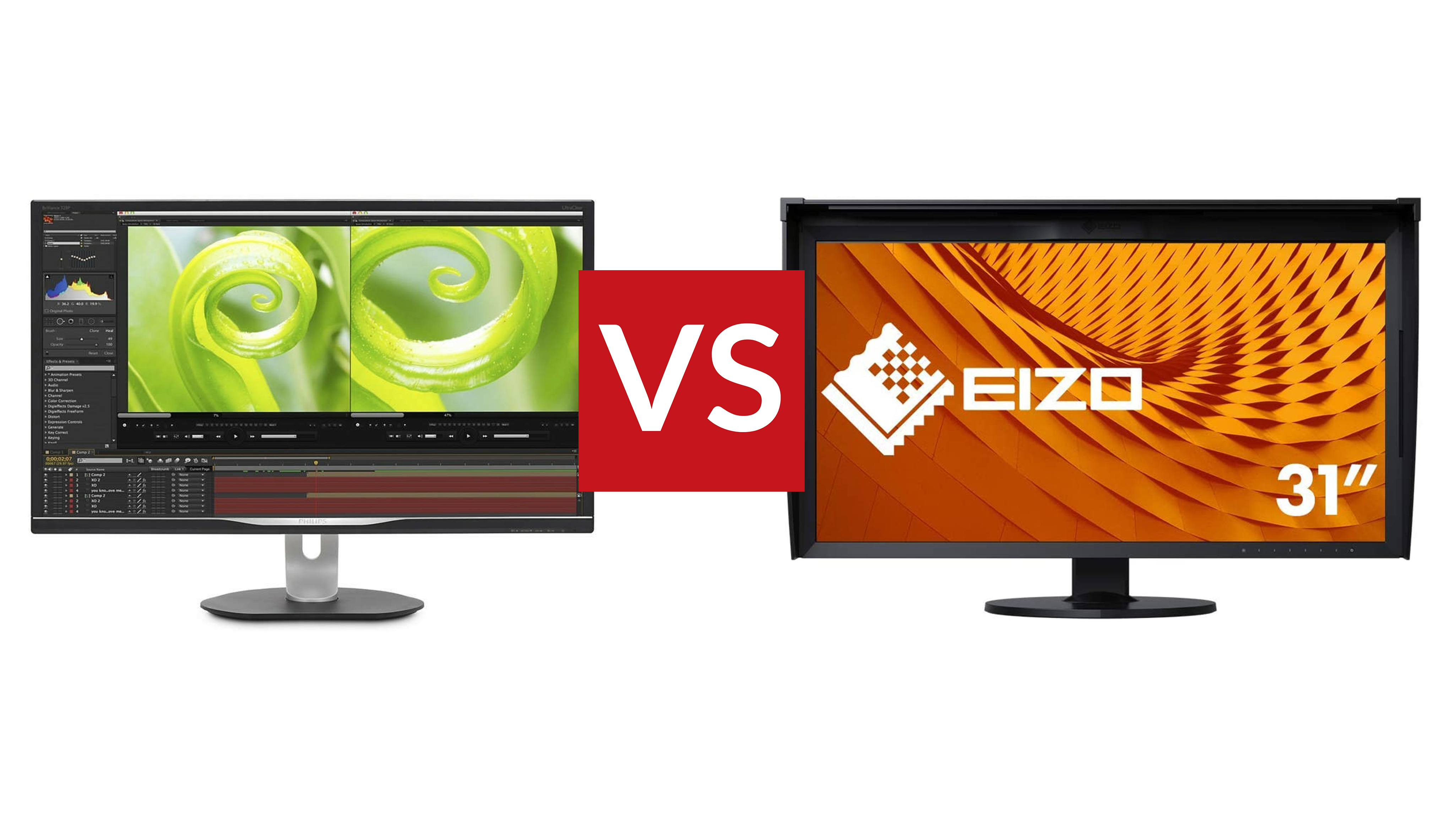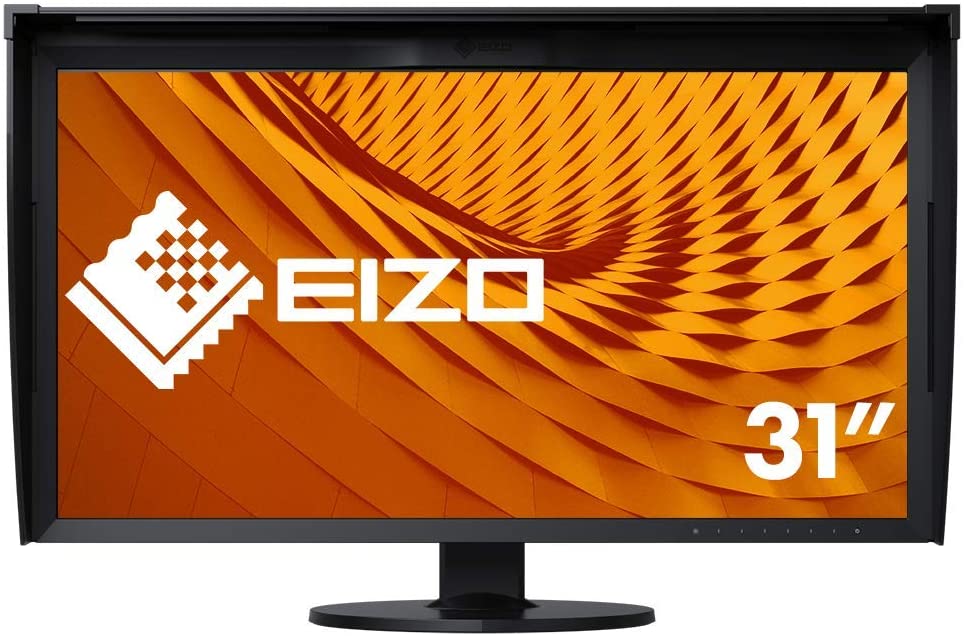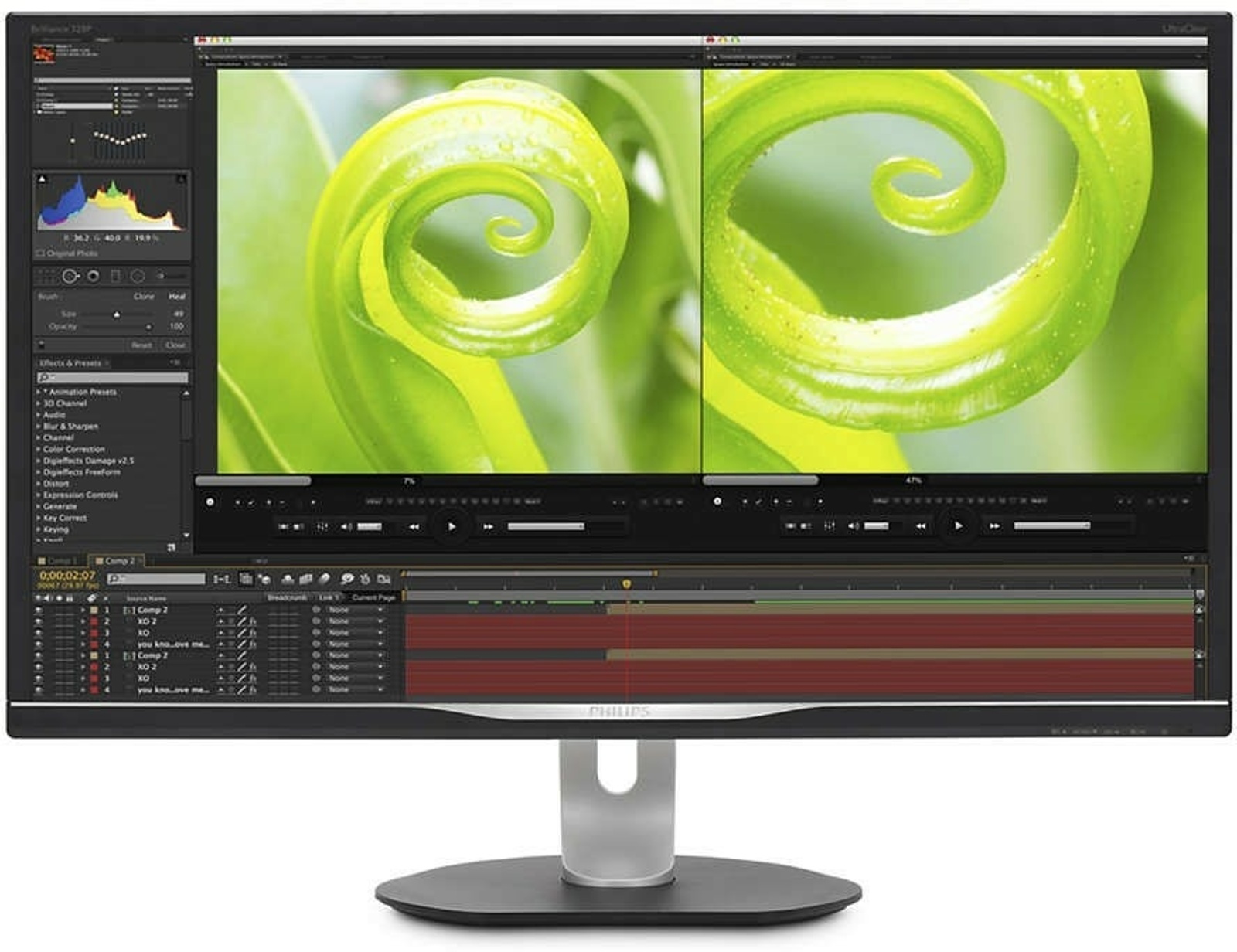

Straight off the bat, it's worth pointing out the obvious. Despite both featuring in T3's guide to the best 4K monitors you can buy, the Philips Brilliance 328P and Eizo Coloredge CG319X are priced very differently. In fact, the latter is about eight times the price!
So you might be wondering, what on earth is the point in comparing them? Well, it's good to know the differences between consumer- and professional-grade monitors, and why there is such a huge gap between the prices of these two examples. And these two monitors demstrate that perfectly. Both are great buys but they're suited to completely different users.
Looking at these two displays also gives us the opportunity to explain why monitors like the Eizo Coloredge CG319X are priced the way they are, and how their accuracy is vital for professionals to do their job properly. But in the same breath, we will also show how high-quality 4K monitors like the Philips Brilliance 328P are intended to be strong all-rounders for consumers and professionals alike.
If you're not looking to build out your home office, but you are looking for something suitable for gamers then you might be better off heading straight to T3's list of the best gaming monitors.
Philips Brilliance 328P vs Eizo Coloredge CG319X: Design
Professionals often use separate third-party sensors to calibrate their displays, so integrating the sensor into the screen bezel itself is a nice move by Eizo.
The 32-inch Phillips display looks much like any other computer monitor on the market today. This particular model sits on a fairly compact foot that attaches to the middle of the rear of the monitor. Called the SmartErgoBase, the foot allows the screen to be tilted up and down, rotated left and right, slide up and down to adjust its height, and rotated from landscape to portrait.
There is also a neat cable management system to keep your desk looking tidy for all of your working-from-home Instagram shots, and the compact base shouldn’t take up too much space on your desk.
Sign up to the T3 newsletter for smarter living straight to your inbox
Get all the latest news, reviews, deals and buying guides on gorgeous tech, home and active products from the T3 experts
The Philips display has a fairly narrow bezel, but is about on par with most other displays of its kind. In short, this is a 4K monitor that has a simple, inoffensive design that will blend in nicely wherever you put it, can be adjusted in every direction, and shouldn’t take up too much space.
As for the 31.1-inch Eizo Coloredge CC319X, you can immediately see some key design differences. For a start, there is a detachable light shielding hood designed to prevent glare hitting the display. This should help reduce eyestrain and associated headaches, but also means the output of the display is unaffected by ambient light – a crucial factor when you are working on images and video that need to be edited to perfection.
The hood attaches to the monitor magnetically and folds up so as to be easy to store when not in use.
Like the Philips, the Eizo’s stand allows for the screen to be tilted up and down, rotated left and right, and slid vertically to help you find the most ergonomic position. It also features a quick release system so that the screen can be removed from the stand with a single touch. Added to the integrated carry handle, this means the monitor can be detached from its stand and transported to another office, or between home and the office, with relative ease.
The eagle-eyed among you may have noticed a small bulge in the centre of the top bezel. This houses a fold-out sensor that is used to automatically calibrate the monitor. Something you won’t see on a consumer-grade monitor, this sensor is used to ensure the display remains colour-accurate, so that what you see on screen is how a project will look when it is either printed, published, uploaded or transferred elsewhere.
Professionals often use separate third-party sensors to calibrate their displays, so integrating the sensor into the screen bezel itself is a nice move by Eizo.

Philips Brilliance 328P vs Eizo Coloredge CG319X: Hardware and connections
Almost as important as picture quality (at least at the consumer end of the market) are the types of connections offered by a 4K monitor. For the Philips Brilliance 328P, this means a single HDMI 2.0 port with HDCP, one DisplayPort connection, one DVI-Dual Link with HDCP and one analogue VGA connection.
There are also four USB 3.0 ports, of which one offers fast charging capability, plus an audio-in connection and a headphone / audio-out connection.
All this means you can connect several devices at once – such as a computer via DisplayPort and a game console via HDMI – as well as a speaker or sound system to the headphone jack and devices like smartphones to the USB ports. We especially like how its four USB ports mean the monitor doubles as a charging hub, and how the screen can be used for computer work during the day, then with a game console or media streaming device for entertainment in the evening.
The Philips monitor also has a pair of 3-watt speakers, but if you want to use the screen for entertainment you will likely want to use headphones or connect it to a more powerful audio system or sound bar. Finally, there is a 100x100mm VESA mount on the back for wall-mounting the monitor or attaching it to a different stand.
Now for the Eizo Coloredge CG319X. This monitor has two DisplayPort connections with HDCP 1.3, plus a pair of HDMI ports with Deep Color, HDCP 2.2 and 1.4. There is also one USB-B 3.1 port and three USB-A 3.1 ports for charging devices like smartphones.
As with the Philips, this port selection means you can attach a computer and another device like a game console or media streamer, although we suspect the latter is less likely in the professional environment this monitor is intended for. A second computer is probably the better option here, but with many of us working from home at the moment professionals equipping their home office may welcome the input flexibility of the Eizo and hook up a console for some down time.
A key difference is how the Eizo cannot handle audio and has no speakers, so you will have to attach your computer and other devices to a separate speaker, sound system or headphones. Given the professional nature of this monitor, that all makes sense and gives you the freedom to attach your own high-end audio equipment instead of relying on sub-par integrated speakers.
As with the Philips, the Eizo is compatible with 100x100mm VESA mounts and stands.

Philips Brilliance 328P vs Eizo Coloredge CG319X: Specifications
Now it’s time to get technical, and we’ll start with the simpler Philips. Being 4K, this monitor has a resolution of 3840 x 3160 at 60Hz, making it capable of displaying Ultra HD content natively. It is also a 10-bit HDR panel which means smoother colour graduation and detail over an 8-bit alternative, and has the ability to display 1.074 billion colours.
The display uses a W-LED backlighting system, has an anti-glare coating and uses the common 16:9 aspect ratio. It has a typical response time of 4ms, a contrast ratio of 3,000:1 and a pixel pitch of 0.181 x 0.181mm. The maximum viewing angle is 178 degrees.
Now for the Eizo. This professional-grade IPS monitor is also 4K but has a higher resolution of 4096 x 2160 – a slightly taller 4K standard used in video production – and an aspect ratio of 17:6. This means the screen can be used for high-end video and imaging work, but also for regular Ultra HD content like movies and gaming. The display is also equipped with HLG (hybrid log-gamma) and PQ (perceptual quantization) curve for editing HDR video content; pixel pitch is 0.170 x 0.170mm
A wide-gamut LED backlighting system means the monitor can reproduce 98% of the DCI-P3 standard used in digital cinema production, and the screen also caters for 99% of the Adobe RGB colour spectrum too. All of this means colour reproduction is as accurate as possible.
The 1500:1 contrast ratio and 9ms response time are lower than the Philips, but the key here is accurate colour reproduction for professional editing work.
Philips Brilliance 328P vs Eizo Coloredge CG319X: Price and verdict
Meanwhile, the Philips is a top-notch, consumer grade 4K monitor that can serve as an excellent work screen during the day and an equally impressive TV or gaming display at night. The Philips is a very strong all-rounder, but if your job depends on colour accuracy you’ll be best off saving up for the Eizo.
As we said at the start of this comparison, there is a huge price difference between these two 4K monitors. How huge? Well, the Philips Brilliance 328P can currently be picked up for around £500, while the professional-grade Eizo is around £4,000.
While some of the specifications of these monitors are similar, the color accuracy of the Eizo is what earns it that price tag. This is a 4K monitor to be used by professionals and is not intended for consumers to hook up their Xbox or MacBook Air and stream some Ultra HD content from Netflix. While you can do that, the focus here is on pro-level image and video editing.
Alistair is a freelance automotive and technology journalist. He has bylines on esteemed sites such as the BBC, Forbes, TechRadar, and of best of all, T3, where he covers topics ranging from classic cars and men's lifestyle, to smart home technology, phones, electric cars, autonomy, Swiss watches, and much more besides. He is an experienced journalist, writing news, features, interviews and product reviews. If that didn't make him busy enough, he is also the co-host of the AutoChat podcast.

